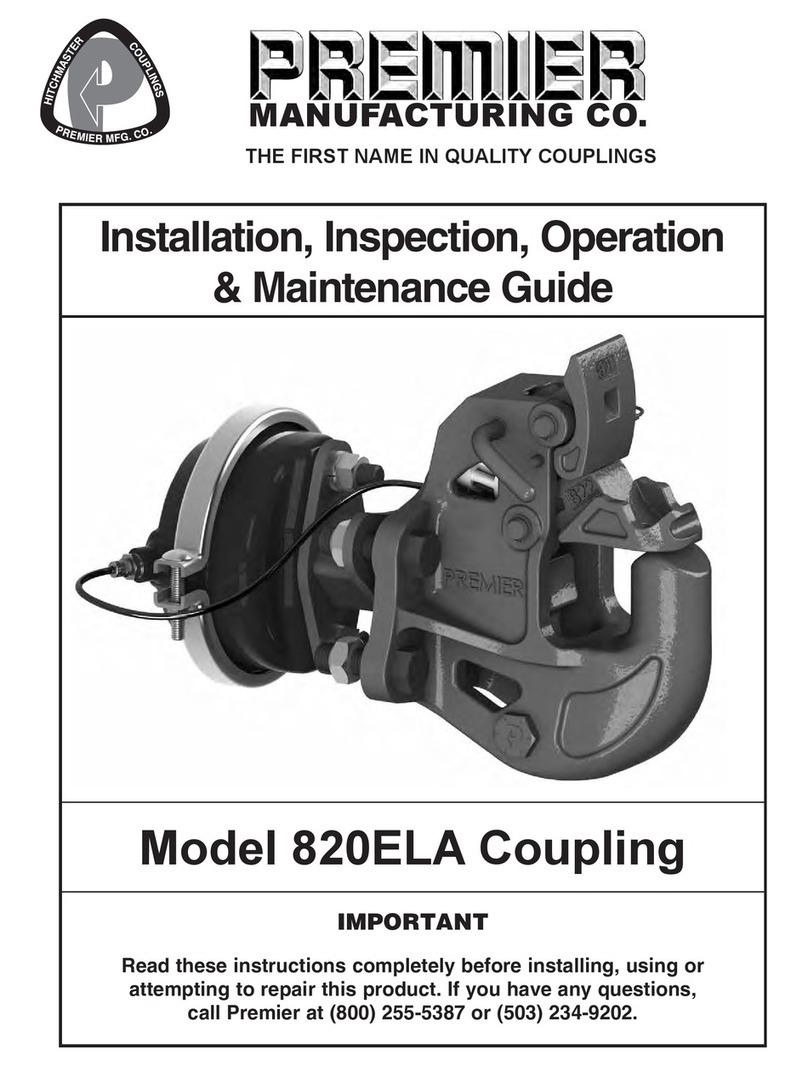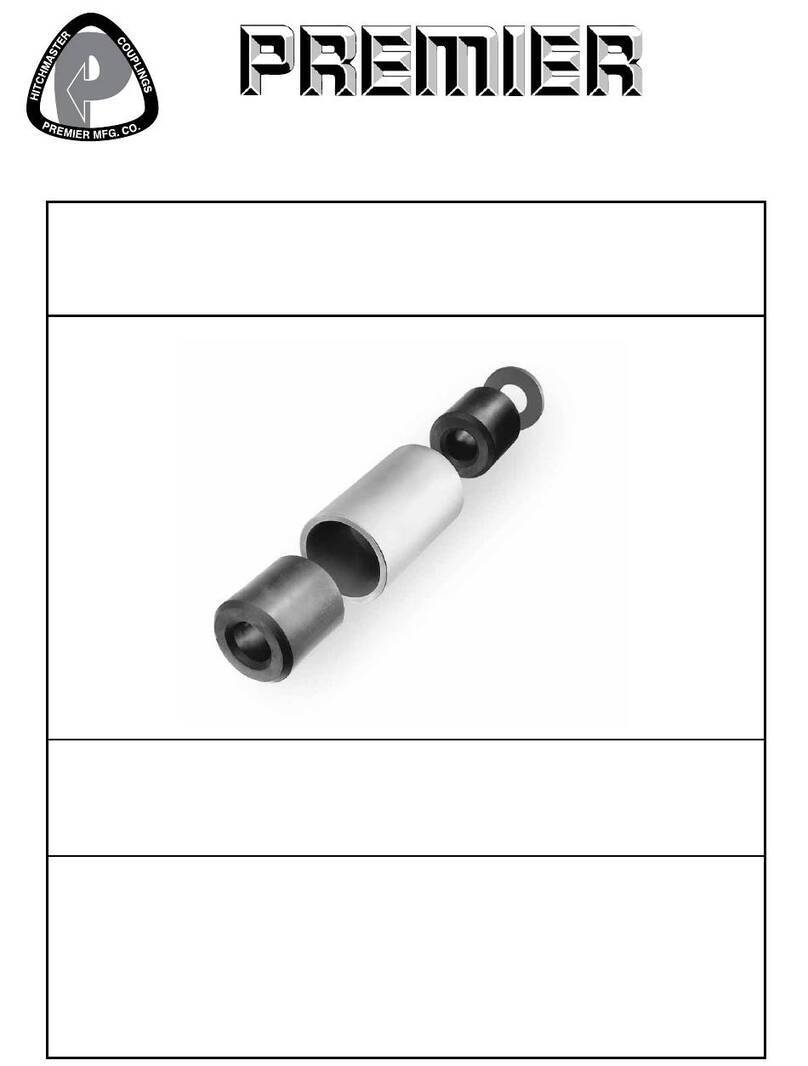
Page 2 1-800-255-5387 • www.premier-mfg.comPREMIER MANUFACTURING
IMPORTANT NOTES TO CLEAN, INSPECT & LUBRICATE:
• Use only genuine PREMIER replacement parts on any repairs. Use of other parts, which can have different specifications or
tolerances, may fail to alert you to non-obvious damage to the hitch which can lead to hitch failure.
• All body holes, part holes and pins need to be thoroughly cleaned and lubricated with heavy grease before the parts are
reassembled. DO NOT LUBRICATE PINTLE HOOK WEAR SURFACE.
• Clean, inspect and lubricate latch components every 90 days or sooner if required by the operating environment.
• Clean and inspect the coupling for damage and excessive wear prior to each and every use.
• Do not over-tighten fasteners as this may cause damage.
ASSEMBLY:
1. If you are replacing the 279 Shoe and its components, then follow the instructions below: Otherwise continue on to #2.
a. Place the 266 Spring over the nipple on the 279 Shoe. Insert as assembled through the opening at the top of the
coupling and into the cavity at the bottom. The 266 Spring should seat into the concave cavity, which resides below the
pintle base. The 266 Spring must be slightly compressed to align the 279 Shoe hole with the bottom body hole. From
the left side of the body, insert the 274 Bolt (left to right) into the bottom coupling body hole and secure it on the right
side with 274A Locknut. Rotate the 279 Shoe to verify proper spring tension (see Image #5).
2. Using snap ring pliers, install one 275-50 Snap Ring into one groove on the 275 Pin. Verify that the snap ring is fully seated
into its groove.
3. Take the 273A Spring and hold it so that the straight leg is on the left side pointing downward and the hooked leg is on top
pointing to the right.
4. Holding this position, insert the spring into the top left side interior body, aligning it with the 275 Pin body hole. The straight
leg of the spring aligns along the interior body sidewall (see Image #3).
5. Note the “flat” area on the 275 Pin. Insert the 275 Pin from the left side into the body until the 273A Spring rests on it.
6. Insert the 273 Pawl into the top of the coupling, keeping the hooked leg of the spring on the bottom catch ledge of the pawl.
7. Align the pawl hole with the 275 Pin. Slide the 275 Pin through the pawl and out the other side of the coupling body (see
Image #4).
8. If the spring is installed correctly, smooth increasing spring resistance should be felt when rotated to the open position. If no
resistance or binding is felt, the spring and/or parts are not installed correctly. Reassemble correctly.
9. Slide the 273 Pawl to the left and rotate it to the open position, to locate the set screw hole on the underside of the 273
Pawl (see Image #5.)
10. Rotate the 275 Pin until the “flat” aligns with the set screw hole, then insert the 273C Set Screw and tighten.
11. Use caution and allow the spring-loaded 273 Pawl to return to the closed position.
12. Using snap ring pliers, install the second 275-50 Snap Ring, on the right side, into the groove on the 275 Pin. Verify that the
snap ring is fully seated into its groove.
13. Slide the 273 Pawl to the left and rotate it to the open position. While holding the pawl in the open position, locate the 274
Bolt and partially insert it through the left side body hole.
14. Insert the 272 Latch into the body, until the latch hole aligns with the 274 Bolt and slide the bolt through until the bolt head
is flush against the body. Secure the bolt on the right side with the 274A Locknut.
15. Once the coupling is assembled it should be opened and closed several times, testing for smooth and correct operation.
DO NOT use the coupling if it does not operate properly. Call for assistance.
ASSEMBLY IS COMPLETE
NOTE:
• Use only new Grade-8 fasteners torqued to SAE specifications when mounting the assembled coupling to its mounting
structure.
WARNING:
• Do NOT bind-up (jackknife) any application, as stresses can cause damage to the hitch, drawbar eye, other components, or
any combination of them. Jackknifing may result in failure of products or components, resulting in the detachment of the
trailer while in use.






























